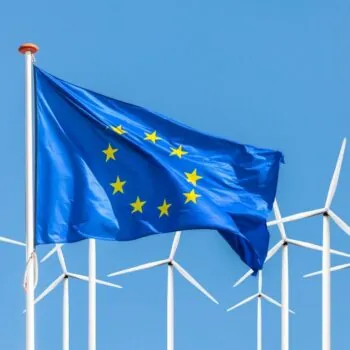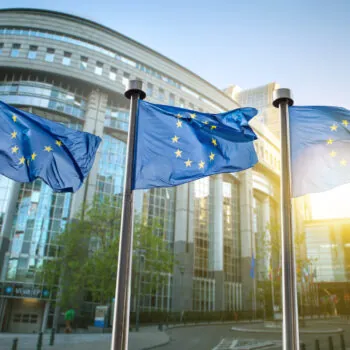Much has been written about the botched US response to the COVID-19 pandemic.
The US has 4% of the world’s population but 25% of its coronavirus cases. The US death toll is more than twice as high as Brazil’s, the country with the second-highest death rate. Leaders in both countries have continued to downplay the severity of coronavirus and bear a disproportionate share of cases.
The US GDP fell almost 5% in the first quarter of 2020, then the Atlanta Federal Reserve projected a second quarter drop of 53%. Job losses have passed 40 million. Congress has spent roughly $3 trillion so far in recovery packages, with a fourth currently under discussion. Those trillions have cushioned the blow for now, but as they fade, and fear of the pandemic remains, long-standing systemic economic, social and racial inequities will continue to be revealed.
The US administration’s response
For all the global talk of ensuring an inclusive and sustainable recovery and building back better, none of it is landing in the US. The Trump administration seems intent on using this moment to sow division and distrust. The parallels between reactions in the US to the pandemic and to climate change are unnerving and foreboding. For example;
- the willful ignorance of science and data
- the refusal to take preemptive action to reduce risk and save lives
- the disconnect between the stock market and the real economy
- and the distrust of government and international institutions like the IPCC and WHO.
Where else has the face mask become a political symbol?
Hope for what’s next?
This crisis offers us a once-in-a-lifetime opportunity to rebuild our economy to withstand the next shock coming our way: climate breakdown.
There are several levers to reorient the US economy at this time of crisis. Here are a few areas to watch.
Economic climate leadership
There is an opportunity for the Federal Reserve, with the Bank of England and European Central Bank, to unwind their asset purchase programs in a way that pulls future risks forward and accelerates the transition. Now is a good time for Blackrock CEO Larry Fink to practice what he preached in January 2020, reminding his peers and the Federal Reserve board that climate risk is investment risk. Rather than propping up zombie fossil fuel companies, now is the time to reassess asset values.
US Climate Policy
There has been a lot of movement on climate policy in the US including highly detailed and comprehensive plans recently released by the House of Representatives Climate Crisis Committee and the Biden and Bernie Saunders Unity Task Force.
The climate change task force, led by former Secretary of State John Kerry and Representative Alexandria Ocasio-Cortez of New York, declared climate change to be a national “emergency” and tied efforts to reduce fossil fuels to the need to address racial injustices. These are both serious, heavyweight efforts with concrete policy proposals including moving to net zero greenhouse gas emissions no later than 2050. On paper, it all looks great. But there is no chance of it becoming a reality unless the politics changes….
US Election Politics
Polls show even during the pandemic climate change remains a priority for most Americans. A record-high 54% of Americans are “extremely” or “very” sure global warming is happening. Two in three Americans (66%) say they are at least “somewhat worried” about global warming. But polling also shows that the issue is as partisan as ever.
The latest election polls show a clear gap emerging, with Biden out in front in national polls and critical swing states where politics is grappling with physics. The latest surge of COVID-19 cases and hospitalizations in Republican strongholds like Florida, Arizona, Texas and Georgia suggest they may be in play. Trump’s strategy so far seems to be an appeal to his base, which is alienating other groups – for example white, suburban women – who voted for him last time. Nevertheless, after 2016, pundits are nervous about making projections.
The Next Administration
There are different scenarios to prepare for:
- a protracted battle around the election results and handover of power;
- A Trump second term – which would be disastrous for climate and put the kybosh on a sustainable recovery;
- Biden with a split Congress, mildly better if we don’t actually mention the word climate; and
- Biden with a democratic house and senate where we could actually see a paradigm shift.
While he has come a long way on climate, a Biden presidency will not be a panacea. For one, advisors shouldn’t assume they hit pause four years ago and can pick up where they left off. The world has changed; the new president will be walking out on to a global context that will still be grappling with the pandemic and its cascading effects.
The World can’t wait for November
The election on November 3rd is a pivotal moment on which most Americans, global citizens and climate advocates, are rightly fixated. Yet given the world is experiencing a global pandemic and facing the biggest recession since the 1930s, we cannot wait for the next administration to act.
We desperately need countries to cooperate for a faster and fairer recovery, and yet the G20 seem unable to agree a communique. This means countries leading diplomatic processes – such as the UN Financing for Development, Financing in Common summit of public development banks, the G7 and G20, and COP26 – are going to have to step up in the absence of US leadership.
In every crisis there are opportunities – in this case, opportunities for other major powers like the EU, UK, China and Japan to show political leadership around issues like development finance, debt restructuring, and climate diplomacy.
This is the change we need – now.


